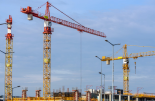a.s.r. real estate: More than bricks and mortar - science parks as investable ecosystems
a.s.r. real estate: More than bricks and mortar - science parks as investable ecosystems

This article was originally written in Dutch. This is an English translation.
Science parks contribute to social goals such as knowledge development and regional strengthening. For investors, the real estate dynamics at science parks also present an opportunity to invest in a resilient submarket
By Nick ten Haaf, Robin Brett van Steen and Benny Ng
Science parks (SPs) are geographically clearly defined locations where technology companies, research institutions and often universities are concentrated. They are gaining ground among institutional investors because of their unique position within the broader real estate landscape. They combine a strategic location, close ties with knowledge institutions and a dynamic mix of young and mature companies with a technological character. Instead of relying solely on stable tenants, the strength of SPs lies in their ability to create, attract and facilitate innovative activity. Relocation data shows where ecosystems are resilient, where companies continue to grow and where real estate moves in line with space demand. It is precisely this combination of dynamism and anchoring that makes SPs relevant for portfolios with a long-term vision.
Research into relocation movements within science parks provides valuable insights
Relocation movements within SPs offer institutional investors valuable insights into the underlying strength of innovative ecosystems. This mobility says something about growth potential, location loyalty and the ability of SPs to retain companies or allow them to grow.
Our analysis covers 37 fully-fledged SP locations in the Netherlands, tracking 6,953 companies between 2014 and 2024 using Chamber of Commerce postcode data. In total, 36% of companies relocated at least once. The population consists of 39% start-ups, 21% scale-ups and 40% mature companies.
Risk diversification through optimal tenant mix
Mobility patterns: Of all companies, 36% relocated. Start-ups show the highest mobility (47%), followed by scale-ups (33%) and mature companies (27%). The mobility percentage is slightly higher at university SPs (38%) than at corporate SPs (33%).
Differences per SP type: Companies on university SPs move within the campus more often (35%) than on corporate SPs (33%). Companies on university SPs also move to other SPs relatively more often. Corporate SPs, on the other hand, show more triggers for privatisation and takeover (12% versus 3%). This underlines the role of the type of anchor institution in steering ecosystem behaviour.
Business continuity and relocation behaviour by growth phase: The likelihood of closure varies significantly by business phase. Start-ups have the highest closure rate (29%), followed by scale-ups (19%) and mature companies (15%). At the same time, mature companies are the least mobile: 72% did not relocate during the research period. This indicates strong local ties, but this does not automatically result in a higher survival rate. Scale-ups, on the other hand, combine relatively low closure rates with moderate mobility. For investors, this emphasises the importance of tenant composition: the growth phase determines not only risk, but also the location and relocation behaviour of tenants.
Relocation direction and retention per growth phase: A further breakdown provides more insight into the relocation movements of different types of companies. Looking at the 50% largest SPs, it appears that the further companies are in their development phase, the greater the chance that they will remain within the SP. Start-ups relocate within the same SP in 25% of cases, while for scale-ups this rises to 41% and for mature companies to 50%. Relocations to other SPs also increase with the growth phase: from 9% for start-ups to 12% for scale-ups and 16% for mature companies. Start-ups account for 50% of the total number of relocations, scale-ups for 19% and mature companies for 30% (see Figure 1).

This trend points to an increasing connection with the broader ecosystem as companies mature. While young companies are more likely to leave or cease trading, growing companies appear to consciously remain within the SP. This may indicate local anchoring, the search for more specialised facilities, upscaling or strategic proximity to other knowledge parties.
The combination of mobility, retention and ecosystem-driven growth positions SPs as a separate asset class, with its own dynamics and a different risk profile.
Science parks: the interplay between dynamism and connection offers future-proof value
Relocation dates are more than just operational signals – they serve as indicators of the health and resilience of SP ecosystems. It is important for investors to understand where dynamics are part of growth and where retention creates value. This requires an accommodation approach that moves with the life cycle of companies: from flexible laboratories and short-term contracts for start-ups to long-term agreements for mature Research & Development organisations.
SPs distinguish themselves by offering space to stable, capital-rich tenants – such as research institutions and established Research & Development companies – on the one hand, and accommodating growth potential in the form of young innovative companies on the other. The combination of mobility, retention and ecosystem-driven growth positions SPs as a separate asset class, with its own dynamics and a different risk profile, making them attractive to investors seeking diversification, future-oriented investments and a certain degree of inflation protection within real assets.
The social component – through sectors such as life sciences, medical technology, sustainable food supply and high-tech systems – strengthens the strategic profile of this category. Without claiming that every SP automatically delivers social impact, well-managed parks can contribute to broader portfolio goals at the intersection of return, innovation and impact.
Conclusion
Science parks are not a traditional real estate product. They are at the intersection of innovation, business and talent. The relocation analysis confirms that these ecosystems function well: turnover, scale-ups continue to grow, and mature companies remain embedded. SPs therefore combine vitality with stability – a rare combination in the real estate landscape. SPs are closely linked to technological and social trends, such as digitisation, medical technology, sustainable chemistry, climate adaptation, defence, security and food security. As a result, real estate in SPs behaves differently from the traditional office sector, which is more sensitive to economic cycles.
Investors who include SPs in their allocation are positioning themselves for the long term: with stable rental income, diversification, exposure to innovation, and a structural contribution to the knowledge economy. Although this impact cannot always be directly quantified, it makes SPs a relevant building block in portfolios that focus on both return and impact. They can therefore play a valuable role in the asset allocation of institutions that want to invest with a view to the future. Delving deeper into this investment category can be worthwhile for those looking for investments with substantive relevance and long-term portfolio strength.
|
SUMMARY Science parks as an asset class offer a unique combination of dynamism and stability within a property allocation. Business dynamics vary depending on the growth phase and require a suitable property offering. Science parks are essential for those seeking sustainable, meaningful investments in innovation and who want to contribute to the knowledge economy. |









